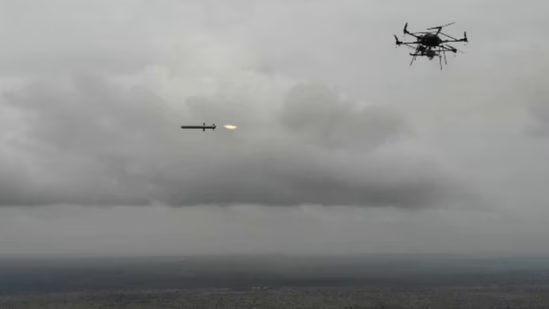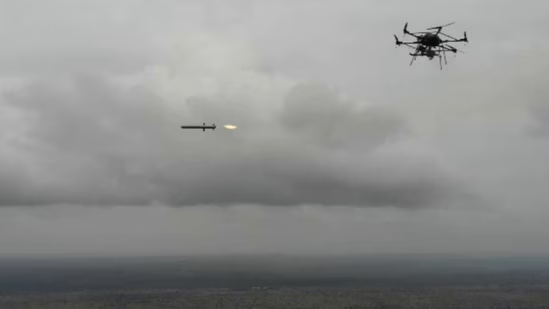The Defence Research and Development Organisation (DRDO) has successfully conducted flight trials of the UAV-Launched Precision Guided Missile (ULPGM)-V3 at the National Open Area Range (NOAR) in Kurnool, Andhra Pradesh, marking a significant advancement in India’s defence capabilities.
DRDO Conducts Successful Trials of Drone Missile
Key Features of the ULPGM-V3
- The ULPGM-V3 is an upgraded version of the previously developed ULPGM-V2 missile.
- It features a high-definition dual-channel seeker, which grants the missile the ability to precisely target a wide array of threats in diverse operational scenarios, both in plain and high-altitude environments.
- The system is equipped with notable enhancements:
- Day-and-night operational capability.
- Two-way data link, enabling real-time target updates post-launch.
- Three modular warhead configurations:
Technical and Industrial Collaboration
- The missile was launched from a drone developed by Bengaluru-based start-up Newspace Research Technologies, showcasing strong indigenous innovation.
- The project saw the collaboration of DRDO’s key laboratories and major Indian defence industry partners, including Adani Defence and Bharat Dynamics Limited, as well as over 30 MSMEs and start-ups, reflecting a comprehensive push for Indian self-reliance in critical technology domains.
Operational Significance
- The successful trials indicate the weapon’s suitability for integrating with future long-range, high-endurance UAVs from Indian industry, extending strategic flexibility for the armed forces.
- Defence Minister Rajnath Singh congratulated DRDO and industry partners, noting the trials as a demonstration of Indian industry’s growing ability to absorb and produce critical aerospace and defence technologies.
Broader Context
- The NOAR facility in Kurnool has increasingly become a high-tech testing ground for India’s advanced defence systems. Recent trials have included directed-energy weapons and anti-drone systems, highlighting a continued pattern of innovation and capability development within DRDO and its industrial partners.
This successful test affirms India’s progress in autonomous weapons integration and adds a potent system to its arsenal, supporting enhanced operational reach, survivability, and precision on future battlefields.




















